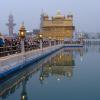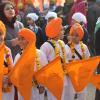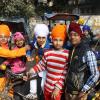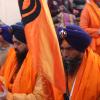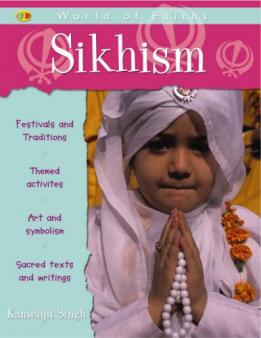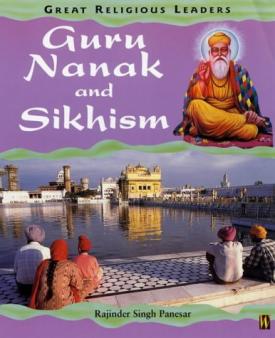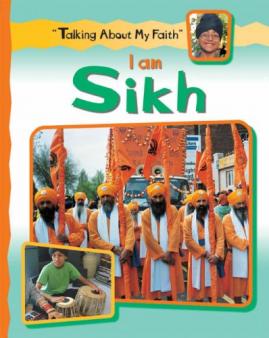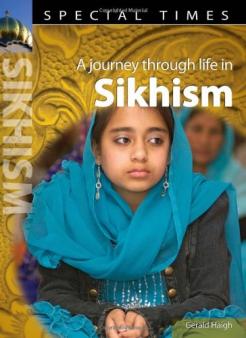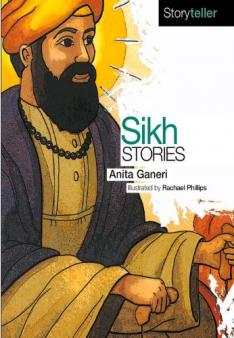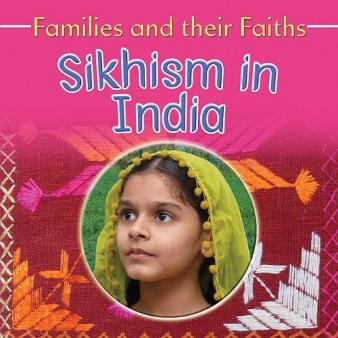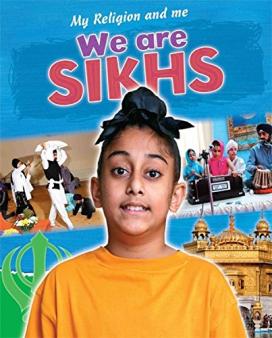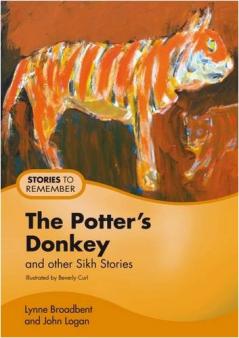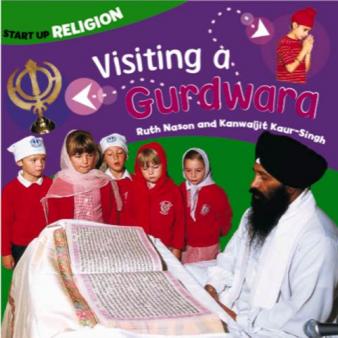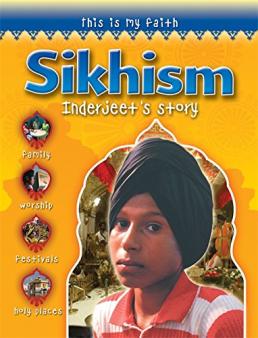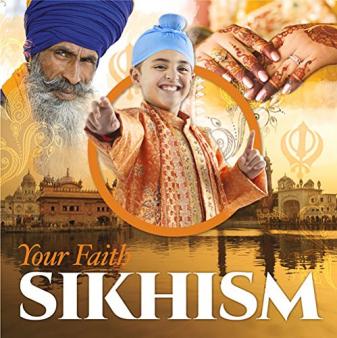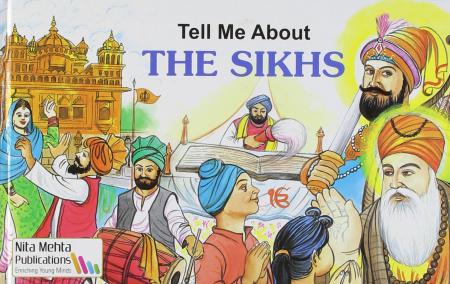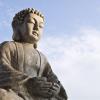Sikhism
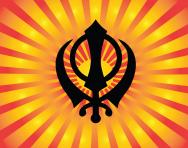
Sikhism began over 500 years ago in an area called the Punjab in India. It was founded by a man called Guru Nanak and is based on what he taught people.
There are over 25 million Sikhs all over the world, although most still live in India. Sikhism is the world's fifth most-popular religion.
Sikhs believe in one God who guides and protects them. Sikhs see everybody as an equal. Leading a good life, doing good things and making the right choices are an important part of the Sikh faith.
Top 10 facts
- Sikhs believe that Guru Nanak, the founder of the Sikh religion, received messages from God to teach people how to follow a simple faith.
- Sikhs take their name from the word sikha, meaning disciples. A disciple is someone who follows a teacher or a leader.
- Ek Ongkar, which means God is one, is the most important teaching in the Sikh religion. Sikhs believe that God is a spiritual power, not a person, and should always be in Siks' minds. Waheguru simran, meditating on God, is a way to worship.
- Sikhs believe there is one God and everyone is equal.
- After the religious service in the Sikh temple, the gurdwara, a special meal called langar is served to everyone, rich or poor, Sikh or non-Sikh. Everyone eats the meal together, sitting on the floor to show that all people are equal. The meal includes vegetables, rice, salad and kheer, a rice pudding.
- Many of the hymns sung as part of services in the gurdwara were written by the Sikh Gurus.
- Traditionally Sikhs do not cut any body hair. Some men don’t ever cut their hair (this is known as kesh). They tie it in a topknot called a jura and wear it in a turban, a long length of material that is wound around a cap or the head, to keep it tidy.
- Some Sikh adult men and women decide to become members of the Sikh community of the Khalsa, founded by Guru Gobind Singh in 1699. There is an initiation ceremony and the Khalsa follow five rules, known as the 5 Ks.
- Vaisakhi, the most important Sikh festival, celebrates the Sikh new year on 13 or 14 April and the foundation of the Khalsa.
- The most holy place for Sikhs is the Golden Temple of Amritsar, Harmandir Sahib, in Punjab in India.
Timeline
- 1469Guru Nanak was born near Lahore, in the Punjab.
- 1539Guru Nanak died in the Punjab town of Kartarpur.
- 1699At a festival in Anandpur the tenth Guru, Gobind Singh, founded the community of the Khalsa.
- 1708The last of the Gurus, Gobind Singh, died. Instead of choosing a person to be the next Guru he decided that all future followers of the Sikh religions should follow the Sikh scriptures, the Guru Granth Sahib.


Boost Your Child's Learning Today!
- Start your child on a tailored learning programme
- Maths & English resources delivered each week to your dashboard
- Keep your child's learning on track
Did you know?
Sikh temples, called gurdwaras, are built with a large central dome. They have four doors to show that they are open to all people. There are no pictures or statues in the gurdwara. Before Sikhs go to worship at the gurdwara, they must take a bath. To show their respect to God, shoes are removed before they enter and people cover their heads. Children often practise singing hymns or learn to play instruments in their local gurdwara.
The symbol or emblem of Sikhism is known as the Khanda.
The Sikh flag is called the Nishan Sahib and is found outside the gurdwara. The term nisan means ‘flag’ and sahib is a term of respect. The Nishan Sahib is orange, with a black Khanda symbol on it.
The Sikh holy text, the Guru Granth Sahib, is exactly 1430 pages long in its printed form, and all the hyms in it are printed in the same order so Sikhs throughout the world can read it in the same way.
Many Sikhs wear a metal bracelet called a kara which helps to remind them of their faith.
The city of Amritsar is very important to Sikh people. Amritsar is situated in the Indian Punjab where Sikhism originated. It houses a great temple called Hari Mandir, or Golden Temple, and is visited every year by thousands of Sikhs from all over the world. There is a huge sacred pool around the temple and Sikhs bathe in it and call it a "pool of nectar".
When a new baby is born, the whole Sikh community likes to celebrate. The new father shares the news with family and friends and gives out boxes of sweets too! New babies are named at a ceremony at the gurdwara: the Guru Granth Sahib is opened at random and the person celebrating the baby reads out the first letter on the left-hand page. The baby's parents then choose a name which begins with that letter and the name is announced to the congregation (the people attending the service).
When a child is older, they will take amrit which is the ceremony a person goes through when they are ready to commit to begin a Sikh.
Many Sikhs are vegetarian.
You can tell someone is Sikh by their name. Boys and men are given an extra Sikh name, Singh, which means ‘lion’; girls and women have Kaur, which means ‘princess’, in their name.
Until they are old enough to wear a turban, Sikh boys (and some girls) keep their long hair tidy by tying it up in a piece of cloth called a patka.
Turbans are sacred head-coverings for Sikhs and their importance to the Sikh faith is recognised by governments; for example, in Britain, Sikhs can wear their turban as an alternative to a motorcycle helmets or hard hats on building sites.
At some Sikh weddings the bride's hands are decorated in beautiful patterns with henna dye.
Look through the gallery and see if you can spot the following:
- The Golden Temple at Amritsar
- Sikh men
- A Vaisakhi procession
- The Golden Temple is the holiest place for Sikhs
- Sikh people bathing at the Harimandir Sahib, the Golden Temple
- Sikh boys wearing orange turbans
- This Sikh flag shows the Khanda, the symbol of the central Sikh beliefs
Gallery
About
Guru Nanak, the founder of the Sikh religion, was born in a small village on a flat green plain known as Panjab in India. He was born into a Hindu family but grew up among both Hindus and Muslims.
Sikhs believe that Guru Nanak was spoken to by God. God urged him to go out and teach people how to follow a simple faith and so he did just that. He preached his message far and wide, encouraging others to forget their differences and live as God wanted them to. Guru Nanak’s message was quite simple: pray to God, work hard, be honest, care for your family and your community. The people who listened to Guru Nanak and began to follow him became known as Sikhs – in other words his ‘learners’ or disciples.
The ideas Guru Nanak first taught still remain at the centre of Sikhism. The religion’s philosophy is that all human beings are equal. Sikhs must remember God in their daily life, work hard and live honestly and share with others. Sikhs respect other religions even though they themselves choose to follow the teachings of the Gurus.
Before he died, Guru Nanak chose Guru Angad to succeed him. There were 10 human Gurus altogether.
The Guru Granth Sahib is the name of the Sikh Holy Book. It consists of writings by all 10 Gurus as well as those from other Sikh, Hindu and Muslim holy men. In fact the Guru Granth Sahib is the only major religious book that contains writings by teachers of other faiths. Sikh Gurus taught their people that there are many different paths to reach God and the Sikh way is just one of them. The Guru Granth Sahib is treated like a living Guru or teacher, and Sikhs look to their Holy Book for advice and guidance. The Holy book is treated with great respect. When it is not being used, it is covered with a special cloth called a rumalla and placed on a special throne called a manji in many gurdwaras. The men and women who look after the Guru Granth Sahib and read it out loud in the gurdwara are called granthi.
Sikhs often display their commitment to their religion by wearing the Sikh articles of faith, which are known as the 5 Ks. They consist of:
- Kesh (uncut hair) - the most important of the 5 Ks
- Kangha (comb)
- Kara (steel bracelet)
- Kirpan (sword)
- Kaccha (soldier’s shorts).
Sikhs can pray anywhere and at any time (though they often start each day with the morning prayer, japji). They don't have a holy day of the week.
Sikhs celebrate many festivals. At every festival, the Guru Granth Sahib is read continuously from beginning to end, which takes about 48 hours!
The most important Sikh festival, Vaisakhi (also known as Baisakhi, Vaishakhi, or Vasakhi), marks the Sikh New Year and involves music, dancing and sport. At Vaisakhi Sikhs remember when the Khasa was created and takes place in April. It also celebrates the harvest.
Like Hindus, Sikhs also celebrate Diwali, the festival of lights. During the Hola Mahalla festival Sikhs show off their ceremonial fighting skills with parades and pretend battles and compete in sporting contests. The Gurpurb festivals celebrate the Gurus' lives and often include processions in which the Guru Granth Sahib is carried through the streets.
The amrit ceremony is a confirmation ceremony, when boys join the Khalsa. Boys wear the turban for the first time and drink the amrit, a holy nectar prepared by mixing water and sugar. The amrit is also sprinkled on the person's hair and eyes. After the ceremony a special food called karah prasad is eaten by everyone in the gurdwara. It's made from flour, sugar and ghee (clarified butter).
Related Videos
Just for fun...
Practise reading and writing the numbers 1 to 10 in Punjabi (when Punjabi is written down, the script is called Gurmukhi).
Make your own Sikh flag, the Nishaan Sahib
Find Sikh games online on the Little Sikhs website
Kiddie Sangat is a Sikh activities website with loads of craft ideas, including Vaisakhi cards, Khanda crafts, a 5Ks little book and more
Sikh Puzzles is a Punjabi and Sikh vocabulary-building game for children, available for Android devices
Watch a video in which a Sikh woman explains her belief system to aliens
How much do you know about the Sikh festival of Vaisakhi? Take a Cbeebies online quiz to find out
Make some Vaisakhi recipes like creamy lentils and rice or spinach, aubergine and chickpea curry
A Vaisakhi tradition is to fly a kite (patang), sometimes decorated with verses of poetry. Why not make a lion kite of your own?
Download a Vaisakhi card template to colour in
Children's books about Sikhism
Find out more
Sikh ceremonies and festivals explained in detail
The BBC Bitesize website has KS2 videos about how Sikhism started, the five Ks and their importance, Sikh traditions, the Gurdwara and Sikh celebration and worship
Watch a video about Charlie and her favourite soft toy Blue as they visit a Gurdwara (aimed at KS1 children)
Information about how Diwali is celebrated by Sikhs
Watch an animated story for KS1 children on the BBC Teach website: the story of The Milk & The Jasmine Flower and the story of Duni Chand & the Silver Needle
See a video explanation of the Sikh symbol, Khanda
A young Sikh explains the Five Ks Of Sikhism in a video
Watch an animation about the life of Guru Nanak, the founder of the Sikh religion
Glossary of Buddhist terms
Amrit - the ceremony a person goes through when they are ready to commit to becoming a Sikh
Chauri - a fly whisk that is waved over the Guru Granth Sahib as a sign of respect
Granthi - the person who looks after the holy book and leads worship in the gurdwara
Gurdwara - a Sikh temple
Guru - a spiritual leader sent by God
Guru Granth Sahib - the Sikh holy book, seen by Sikhs as a live Guru to be followed
Guru Nanak - the first Guru of the Sikhs and founder of the religion
Gurus - the Sikh’s holy teachers; there were 10 human Gurus altogether
Harmonium - a musical instrument similar to a piano
Kesh - uncut hair, usually covered by a turban
Khanda - the symbol of the Sikh faith
Langar - the dining room in the gurdwara where food is served
Punjabi - the language spoken in the Punjab in India where Sikhism comes from
Rumala - the piece of cloth that covers the Guru Granth Sahib
Sikh - ‘learner’ or ‘disciple’
Turban - a long length of material that Sikh men wind around a cap or their head to cover their hair
See for yourself
See pictures of some of the Sikh objects in the V&A Museum Collections
The Central Gurdwara (Khalsa Jatha) in London is the oldest established Sikh place of worship in Europe
The annual Vaisakhi celebrations in Birmingham are the largest Asian Festival in Europe
See Sikh manuscripts online on the British Library website
Also see

Give your child a headstart
- FREE articles & expert information
- FREE resources & activities
- FREE homework help
